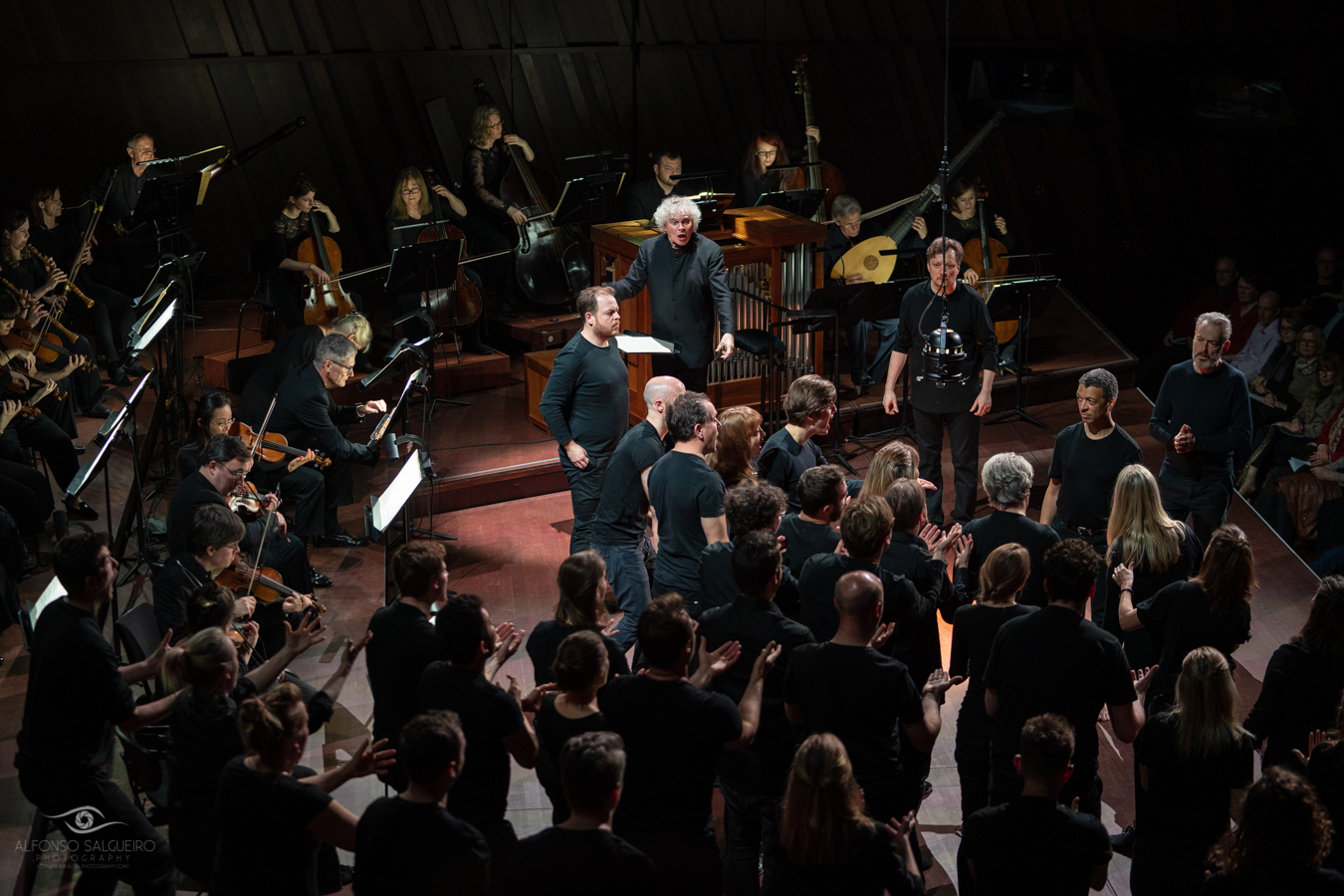Recently I had one of the most challenging assignments as a concert photographer for the Philharmonie concert hall of Luxembourg. I thought I would put together a few thoughts on my experience so other people get an insight on what goes on when they see these images published in the national and international newspapers as well as the Philharmonie’s own publications.
The Philharmonie Luxembourg, also known officially as the Grande-Duchesse Joséphine-Charlotte, is a concert hall located in the European district of Luxembourg City, an area known as Kirchberg. It opened in 2005, now plays host to 400+ performances each year and has become one of Europe's premier concert venues.
«Humanity is fascinating, and if you are truly interested in it, it becomes much more fascinating yet». P. Sellars
American theater director Peter Sellars created a moving staging of Johann Sebastian Bach’s St. John Passion in 2014, and in collaboration with the Orchestra of the Age of Enlightenment, the Choir of the Age of Enlightenment and the direction of Sir Simon Rattle we were treated in Luxembourg to a performance of such beauty that it felt somehow other-worldly. Sellars says his aim was to humanise Bach’s masterpiece.
In part, these intense feelings were enhanced by the superb lighting provided by the light technicians at the Philharmonie. It created very intimate scenes that looked like living pictures. The challenge for me was to capture these scenes in a way that my own feelings were conveyed in the images I produced. That is always what I aim for but in this occasion the difficulties were higher than average due to the very high contrast produced by deep shadows and bright lights. I was also limited as the usual spots from where I take pictures were mostly unavailable. This forced me to be inside the main hall and follow the imperative of being unnoticed and unheard as a photographer.
How did I achieve this? First of all I need to wear dark clothing so as to go as unnoticed as possible when moving around the hall. Shoes are important too since the floors are polished and they need to be made of materials that don’t produce that typical squeaky noise. I also need to know my way around the building perfectly and be cautious while moving in almost complete dark in some areas.
The Grand Auditorium of the Philharmonie Luxembourg
My equipment also plays a very important role in my endavour of going about my job as unnoticed as possible. Not so long ago, cameras used to have mechanical parts that made considerable noise especially in quiet environments. This has been a curse for photographers and the only way to go about it was to use some noise reduction housing that made cameras silent but very heavy and cumbersome. These things were also quite expensive. With the advent of Mirrorless System Cameras everything changed. I wrote another post on this subject recently called breaking the sound barrier.
Some two and a half years ago I decided to gradually move into the Sony mirrorless system and I have already completed the full switch. I could not be happier about it. These cameras are 100% silent and alow me to worry only about the content of my images. For these assignments I always carry two camera bodies, Sony a9 paired with the Sony 24-70mm f2.8 GM lens and a Sony a7RIII paired with the Sony 70-200mm f2.8 GM lens.
Knowing that I can move around without being noticed gives me the freedom to concentrate on capturing those intense and delicate moments musicians and performers go through on stage. I enjoy the whole process of producing my images, from getting my equipment ready to the digital developing of the files. Seeing my images in the press and publications always provides a sense of deep satisfaction. I can only say I am very fortunate and I absolutely love my job.
I leave you here with a small selection of the images I captured at during the performance of Johann Sebastian Bach’s St. John Passion and I thank you for your time.




















